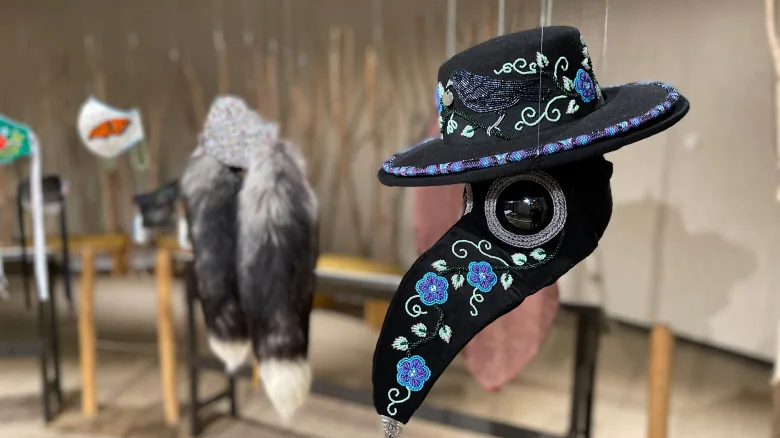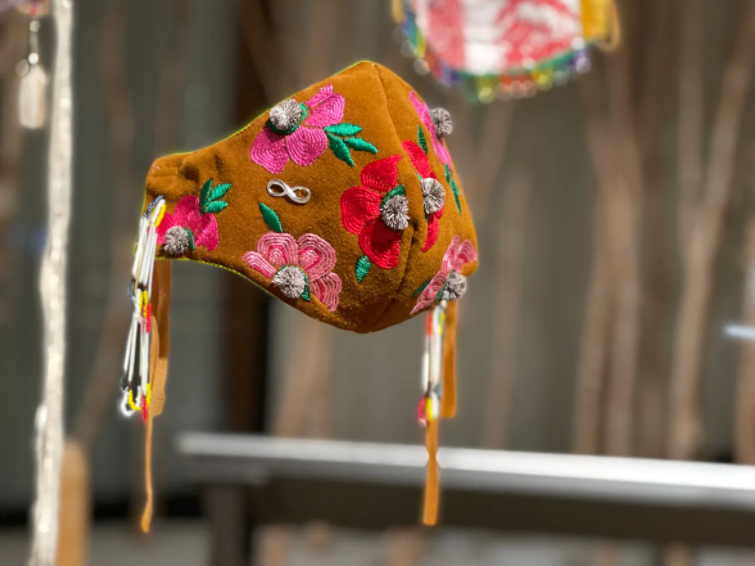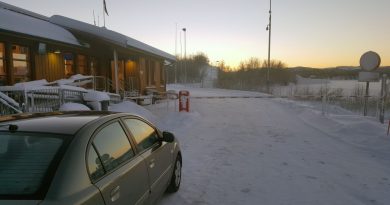Arctic Canada: Artists portray pandemic through COVID-19 masks

When Eliza Firth thinks of the end of the COVID-19 pandemic, she thinks of roses — small, vibrant, in every shade of pink — emerging from under the ice in the Northwest Territories every spring.
“We’re just waiting for the end to see all the colours come and flourish again,” she said.
So when Firth joined the Facebook group Breathe, where Métis artists Nathalie Bertin and Lisa Shepherd were inviting traditional artists to put their spin on the concept of a face mask, she took that inspiration with her.
Now, Firth’s beaded and embroidered deer hide mask Delta Rose is one of 45 masks featured in the national exhibit Breathe: Creating resilience through traditional art, on display at the Prince of Wales Northern Heritage Centre until April 2022.

Firth, who is from Inuvik, is one of two N.W.T. artists featured in the exhibit, along with Taalrumiq, an artist from Tuktoyaktuk whose two sealskin masks titled Inuvialuit Fortitude are also on display.
For Sarah Carr-Locke, director of Culture and Heritage at the Northern Heritage Centre, bringing the exhibit here was “an easy win.”
“It’s really exciting to be able to talk about something current and really show how arts are contemporary and Indigenous art is a contemporary way to respond to contemporary issues in the world,” she said.
Carr-Locke was particularly impressed by the range of techniques and materials represented in the masks.
“There’s metal being used, there’s paper, there’s glass in a couple of cases — and there is also all the traditional Indigenous artistic materials such as quill work, bark, beads and sealskin,” she said.

The masks range in style as well, from a cloth mask decorated with three-dimensional wires that look like breath, to a carved and painted wooden mask from the northwest coast, to a plague doctor mask with blue and green beading in various styles and a silver jingle for the nose.
The masks are suspended from the ceiling of the gallery, so guests can see what artists have done inside the masks as well — some continued their designs or added messages and other elements like a medicine bundle.
“We’re really happy and honoured to have [the exhibit] here,” said Carr-Locke. “It’s an opportunity for people who are able to come to the museum to see beautiful objects that they don’t usually see, pieces that aren’t in our collection.”
And Carr-Locke hopes people will go see the exhibit in Yellowknife while they have the chance.
“It’s gorgeous, and the way that this gallery feels with this art in it is really special,” she said. “It’s been more moving than I expected, to see all these masks together.”
Related stories from around the North:
Arctic: Inuit artists in their own words, Eye on the Arctic
Canada: Canadian snow carvers to compete at international contest in Sweden, CBC News
Greenland: Nunavut children’s books translated for circulation in Greenland’s schools, Eye on the Arctic
Finland: How not to promote Arctic tourism – Why Finland’s Indigenous Sami say marketing their region needs to change, Eye on the Arctic
Norway: Walt Disney Animation Studios to release Saami-language version of “Frozen 2”, Eye on the Arctic
Sweden: Can cross-border cooperation decolonize Sami language education?, Eye on the Arctic
United States: Inuit leaders applaud UN move to designate International Decade of Indigenous, Eye on the Arctic



